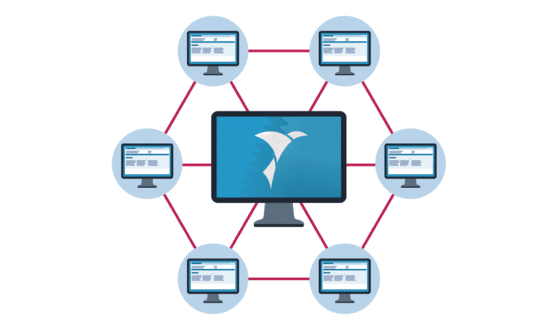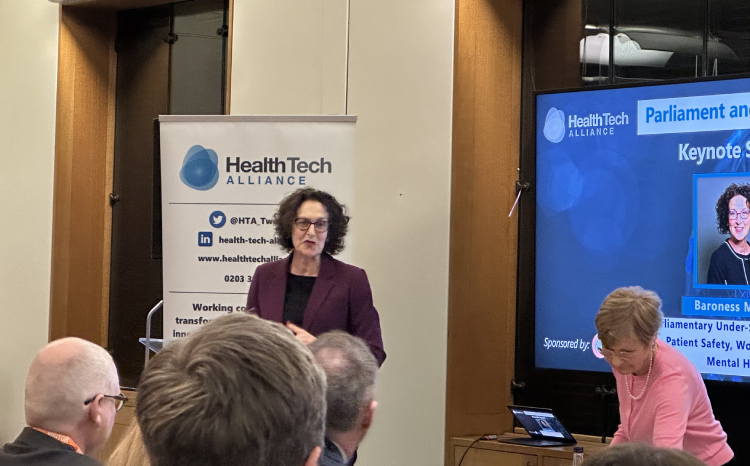TPP launches Battle Royale against EMIS on Twitter
- 29 June 2023

Primary Care EPR software provider TPP is offering English GP practices financial incentives to switch to its SystmOne software in a move that may conflict with public sector procurement rules.
TPP is targetting its main rival EMIS, which has been having significant performance and reliability issues with its EMIS Web product, in what appears to be a bid for supremacy in the primary care market.
TPP is running Twitter adverts that offer practices a £10,000 referral fee, a further £10,000 to cover staffing costs up to the value of up to £10,000 per practice as part of the migration to SystmOne migration costs, and a £3,000 migration fee waived. A further £50 M&S voucher is offered to any GP who books a demo.
The campaign is directly targeting EMIS practices, many have which have been suffering significant reliability and performance problems with EMIS Web, which had a major national outage in May.
EMIS is also facing uncertainty with the £1.2 billion purchase by UnitedHealth Group Incorporated, via Bordeaux UK Holdings Limited, continuing to be reviewed by the Competition and Mergers Authority.
A 23 June Twitter post by TPP director Ashley Brook states “Calling all GPs!… We’re making it even easier to move to @TPP_SystmOne” and lists the incentive payments on offer.
Calling all GPs!
We are making it even easier to move to @TPP_SystmOne
£10k referral fee
£10k to cover migration costs
£50 M&S voucher if you attend a GP demo
~£3k migration fee removed
Ready when you are pic.twitter.com/pnP4Ji4eKO
— Ashley Brook (@AshleyBrookTPP) June 23, 2023
In response to a question about the time taken to cross-over between the systems, and resulting data loss for 4-7 days, Brook replied: “Yeah we are working on a zero day cutover solution. But the £10K will soften the blow in the meantime J”.
Further Twitter posts from TPP said ‘No slowness of wheel of death’ referring to EMIS performance issues:
???? Calling all EMIS GPs! Upcoming SystmOne Demonstration this Friday!
With no slowness or wheel of death, join us and receive a £50 M&S voucher, as well as to understand how SystmOne GPs are saving hours of clinical time each day, including how we are reducing practice and PCN… pic.twitter.com/ISH5cvaAyZ
— TPP (@TPP_SystmOne) June 28, 2023
ICBs worry campaign could breach rules
One ICB leader told Digital Health News that they were concerned that the campaign may breach public sector procurement rules, which prohibit financial inducements to parties involved in a procurement.
As it is ICBs rather than individual practices who now procure practice EPR systems, the TPP campaign appears designed to get individual GPs and practices to create pressure upon ICBs. The ICB leader said they were having to field calls resulting from the campaign which landed without any warning, not allowing time to prepare by taking formal advice on any potential procurement challenge, or to ensure that capacity is available in the system to support multiple migrations.
“TPP appear to be seeking to exploit the opportunity to become the monopoly supplier of primary care EPR systems,” the source said, expressing concerns about the uncertainty surrounding EMIS.
Another NHS source, speaking on condition of anonymity, said that with NHS England in some obvious disarray, following the merger with NHS Digital in February, and 30% job cuts there was a real worry that NHS England has taken its eye of the ball with primary care IT.
They noted none of the latest NHS England 6+1 digital priorities focus on primary care despite potential system wide impact.
The English primary care EPR market has long been an effective duopoly, split between EMIS and TPP. Repeated attempts by national policy makers to open the market to competition have failed, leaving the NHS reliant on two suppliers with little incentive to innovate.
This has provided an opportunity for other third-party suppliers, such as AccuRX, to fill the innovation gap with welcome add on tools, which whilst welcome to the end users, end up costing the NHS more.
NHS England’s GP IT Futures Framework, which made great promises to open up the market, expired in March, having had almost no impact. A replacement framework for buying primary care IT that aims to achieve the same, worth up to £1 billion, is now to be developed. A prior information notice for the framework was issued earlier this month.
Despite promises over many years, however, there have been no significant new entrants to the primary care EPR market in almost two decades.
Ironically, TPP was helped to build its very strong market position during the NHS National Programme for IT in the early 2000s, when it was put in partly to challenge the then dominant market position of EMIS, and to provide CSC with a working interim product it could implement while iSoft Lorenzo was being developed.





3 Comments
Why would you give your intellectual property away for free, not to mention the time and effort of a migration team, if the product in question was any good? If every EMIS customer was referred to TPP and migrated, and there’s around 4500 EMIS GP systems alone, then you’re talking about over £90M. That is a huge amount not going back into the business for investing in the future. TPP has a current contract dispute with Cerner regarding data sharing and that is a massive area of primary care IT needs. EMIS at least seem able to do data sharing with any system that holds any clinical data on other systems. TPP’s model had always been ‘share your data by everyone being on TPP’, which means they’ve never ventured into interoperability and don’t seem to be able to with Cerner either. For me, the blue wheel of death is a pain in the rear but at least I know EMIS are dealing with it by bringing out their cloud based EMIS-X that’ll stop the drain on my poor laptop. I noticed TPP also mentioned bolt-on products as if they’re part of the problem but I can’t see their S1 software having things to rival the likes of AccuRx. Or maybe it does and maybe I should be enticed by the M&S voucher. I wasn’t interested 10 years ago when they were giving away M&S hampers and literally free lunches and I’m not about to fall for it now. Future technologies, if they’re great, are not free and they’re not going to be with a 90M deficit either.
Just in response to the point about a perceived lack of funding for Primary Care – the NHS launched TIF (https://digital.nhs.uk/services/digital-care-services-catalogue/tech-innovation-framework) a year ago. This programme is supporting 7 new market entrants develop innovative Core Clinical Patient Record systems for GP practices in England. At TelstraHealth, we’re 1 of those 7 and really proud of the work done to date making our popular, cloud-native, Australian product ‘Helix’ the right solution for practices in England https://www.linkedin.com/pulse/innovation-primary-care-digital-solution-space-coming-amy-glees
100% bribery. No place for this. As per the discourse conversation, charging to share data sounds like data blocking to me.
Comments are closed.